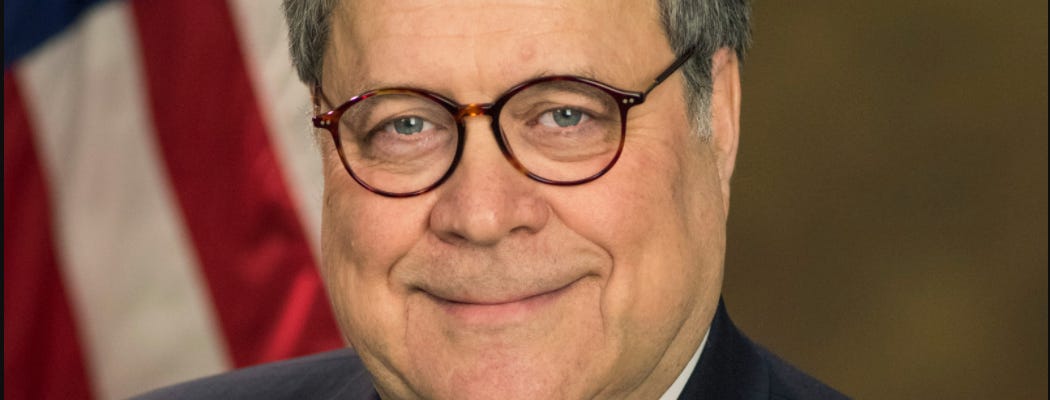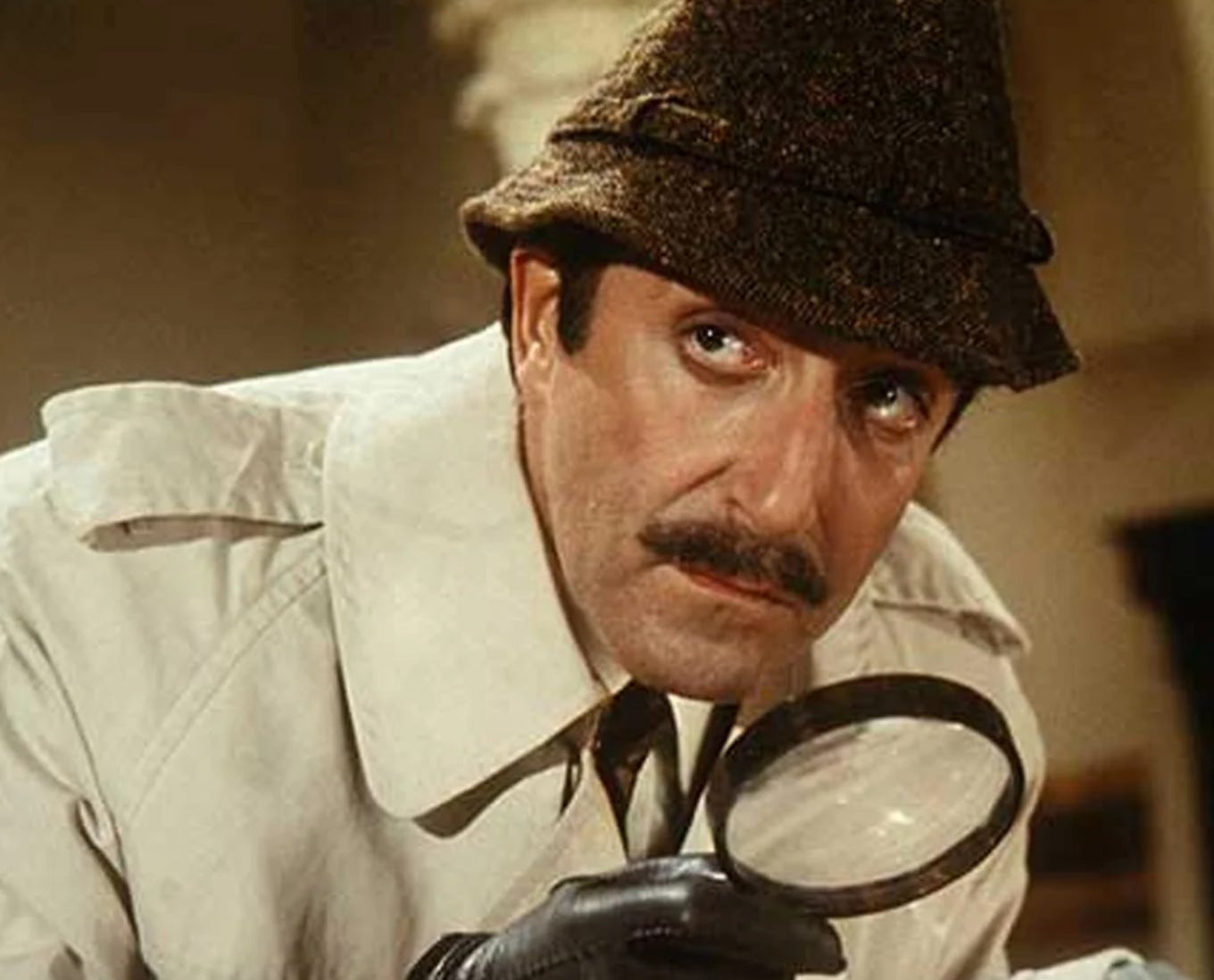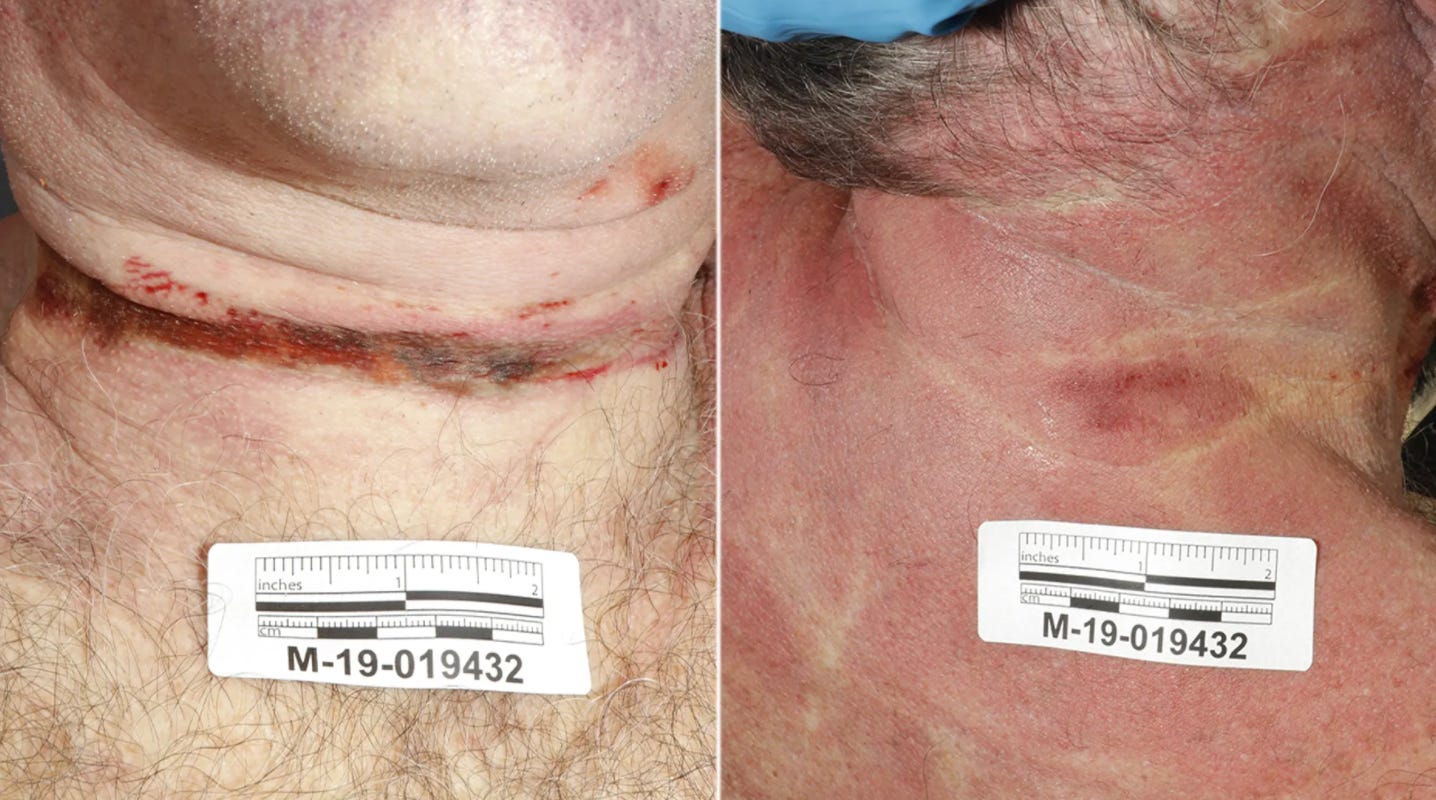
Welcome to Unprecedented, a newsletter that’s all about exposing the lies and corruption of today’s rotten-to-the-core GOP. It’s absolutely FREE to read and subscribe. It only requires an email. But if you’d like to support my work with a paid subscription, or give a gift subscription, I certainly welcome the support!

I wrote last week about the almost-unbelievable chain of events that led up to the “suicide” of the child raping sex trafficker Jeffrey Epstein, a man who had sex-partied regularly with then-President Donald Trump, who had been arrested by Rudy Giuliani’s former law partner Geoffrey Berman, and who had died in the care of Bill Barr, who just happened to be the son of the pervy Dalton headmaster who, in the 1970s, gave Epstein his first entrée into Manhattan high society.
Bill Barr had at first recused himself from the Epstein case over a conflict of interest issue (his former law firm had once represented Epstein). But the next day he unrecused himself, making himself the face of the Trump DOJ’s would-be prosecution of the man his Dad once hired.
Barr said he was “appalled” by Epstein’s death
On the infamous night in August 2019 when Epstein’s guards fell asleep and the cameras didn’t record properly, Barr immediately put himself in charge of multiple investigations into how he died.
As the New York Times wrote later in August:
Mr. Barr knew that Mr. Epstein — a high-profile and politically connected prisoner — could pose a problem, especially after he was found unconscious in his cell last month in a possible suicide attempt. But within a week, prison officials determined that he could be taken off suicide watch, and they assured the Justice Department that he would be monitored around the clock and be placed with a cellmate, whose presence could deter self-harm.
By 10 August 2019, not only was Epstein in a cell that was not being monitored properly by guards or cameras, he had also been left alone, without a cellmate, and had been given enough bed sheet to hang himself with.
“I was appalled to learn that Jeffrey Epstein was found dead early this morning from an apparent suicide while in federal custody. Mr. Epstein’s death raises serious questions that must be answered,” Barr said in a statement. And for a few days after Epstein’s suspicious-looking death, he acted like a man determined to find out how such a “perfect storm” of screwups could happen on his watch.
In one particularly unusual step for an Attorney General, Barr personally interviewed Efrain “Stone” Reyes, the last person with whom Epstein had shared a cell. According to the NY Daily News, “The day before the shocking suicide… Reyes was moved to the privately run Queens Detention Facility, which holds cooperating witnesses.… Following Epstein’s death, Reyes was pulled from the privately run jail for frequent meetings with authorities.”
Barr oversaw 4 investigations into Epstein’s death
On 12 August 2019, the New York Times reported that, “Mr. Epstein’s death has led to an explosion of unfounded conspiracy theories on social media, often uniting people of disparate ideologies who seem to be grasping for any kind of explanation for how it could have happened.”
One of those crazy wackadoodles they quoted was New York Mayor Bill de Blasio, who said, “It’s just too convenient. It’s too many pieces happening simultaneously that don’t fit.”
On 23 August 2019, the Times presented a glowing account of Attorney General Bill Barr’s commitment to finding out the truth about Epstein’s mistifying death:
Attorneys general rarely follow up on inmate deaths, but Mr. Barr has continued to bird dog the investigation into how one as high-profile as Mr. Epstein could have died in federal care, evidence of how serious the matter is for the Justice Department…. Mr. Barr is personally overseeing the four federal inquiries into the matter and is briefed on them multiple times a day.
The Times seemed determined to communicate to its readers that if anyone could get to the bottom of this complicated case of how the world’s highest-profile prisoner got strangled in a small, heavily guarded cell while surrounded by CCTV cameras in an ultra-secure federal detention facility, that man was Bill Barr:
“Bill’s skill set is to doggedly get to the bottom of facts and makes decisions based on them,” said Paul T. Cappuccio, a key adviser to Mr. Barr when he first served as attorney general under President George Bush. “For anyone to try to draw anything more political or conspiratorial from this situation seems unfounded.”
But despite the glowing PR job the Times did for him, Bill “Four Investigations” Barr turned out to be less Hercule Poirot and more Inspector Closeau.

Barr saw “nothing” to make him question the medical examiner’s “suicide” finding
At a 21 August 2019 press conference, Bill Barr at first told reporters, “I have seen nothing that undercuts the finding of the medical examiner that this was a suicide.” Later, however, he responded to a reporter’s question by saying, “Epstein’s death, I think we will see, was a suicide,” perhaps indicating a willingness to manage the outcome in the same way he put his thumb on the scale in advance of the Mueller Report.
Barr’s eager embrace of the “suicide” verdict was undercut in October 2019 when forensic pathologist Dr. Michael Baden, who had been hired by Epstein’s brother to observe the autopsy, presented his view of the case.
Baden told Fox & Friends that Epstein’s injuries—“two fractures on the left and right sides of his larynx, specifically the thyroid cartilage or Adam’s apple, as well as one fracture on the left hyoid bone above the Adam’s apple”—were more consistent with homicidal strangulation than suicidal hanging. The Fox News website describes 85-year-old Baden as a “medical legend” and quotes him as saying: “I’ve not seen in fifty years where (injuries like these) occurred in a suicidal hanging case.”
In addition, Baden told Fox News that hemorrhages found in Epstein’s eyes were “common in homicidal strangulation and uncommon… in suicidal hangings.”
Importantly, according to Baden, if Epstein had been murdered, it would be important to look for DNA on the ligature that caused his death. “We don’t have those results yet,” he said, adding that they “should be reported quickly to give an idea and lessen the speculation.”
But as 60 Minutes revealed in January 2020, even if the medical examiner or FBI did treat the ligature removed from Epstein’s cell as possible murder weapon and test it for DNA, they most likely tested the wrong weapon…
Seven crucial things about the Epstein autopsy that Barr ignored
Barr’s rapid embrace of the ME’s “suicide” finding and his claim that he saw “nothing” to contradict it flies in the face of the evidence that 60 Minutes presented in January 2020 and which Dr. Baden discussed again on Fox News the morning after the 60 Minutes report aired.
Photos from the Epstein autopsy.

Here are seven things about the autopsy that Bill Barr ignored:
- Epstein’s wounds were inconsistent with the ligature found in the cell. Baden told Fox News, “There is no transfer of any blood on that ligature from the neck… It doesn't match the ligature mark on the neck. It’s too wide, it’s too smooth, and it doesn’t have any transfer of skin or blood.”
- No photo exists of Epstein’s body as it was found in the cell. “Forensic pathologists 60 Minutes consulted say that knowing the position in which Epstein was found would clarify certain aspects of the autopsy, including the location of the ligature around his neck, injuries found on his body postmortem, and the way lividity settled, which is the way the blood pools after death.”
- Two nooses were found in Epstein’s cell. Only one—likely the wrong one—was examined for the autopsy. “Photos of the noose taken in as evidence and presumably thought to be responsible for killing Epstein show both ends of the noose folded and hemmed, not cut. Sources have told 60 Minutes that the guard who found Epstein cut him down before trying to revive him.” If, as it appears, the noose the medical examiner looked at had not been cut, that means the ME looked at the wrong noose. (Dr. Baden told Fox News in October 2019 that, as of that time, the FBI had not issued a statement on whether or not the second noose was tested for DNA.)
- Initial autopsy findings were changed from “pending further study” to “suicide” with no additional findings supplied. As Dr. Baden told Fox News in October 2019: “At the time of the autopsy, the doctor doing the autopsy didn’t think there was enough information to say suicide, so she put it ‘pending further study’… the family wants to know why was it changed… it’s 80 days now (and we still don’t know).” The 60 Minutes report in January 2020 stated: “Dr. Kristin Roman, a medical examiner for New York City who conducted the autopsy that Dr. Baden observed, at first did not classify the death as a suicide and listed the manner of death as ‘pending.’ A few days later, Dr. Sampson (Chief Medical Examiner for New York City) said she had reviewed additional evidence and changed the ruling to suicide. She has not revealed what the additional evidence was, but sources tell 60 Minutes that one element was his alleged prior suicide attempt.” In other words, a finding of suicide that flew in the face of Epstein’s actual injuries was based on accepting as fact Epstein’s prior suicide attempt, despite the fact that Epstein had reportedly told multiple people that someone had tried to kill him.
- Dr. Baden, who observed the autopsy, was never interviewed by federal investigators. As he told Fox News in October 2019: “If the Attorney General is investigating the cause of death… somebody should have been investigating everybody who had anything to do with the autopsy.” The fact that a “medical legend” who physically observed the autopsy of Jeffrey Epstein would not be questioned in any of four separate investigations would seem to indicate that the investigators specifically did not want to hear anything he had to say.
- Suicide is considered “nearly impossible” at Manhattan’s Metropolitan Correctional Center. Despite the fact that MCC houses nearly 800 people, the New York Post reported that Epstein’s was the first reported suicide at the “ultra-secure federal lock-up” since 1998. As Business Insider noted in August 2020: “The entire prison, and especially the SHU (where Epstein was detained) — from the layout of its cells to the construction of its beds to the fabric of its inmates’ clothing — is designed in part to prevent self-harm in general and suicide in particular. Under those conditions, a suicide becomes definitionally suspicious.” Epstein was found in a kneeling position, possibly indicating that he had hung himself from his lower bunk. The idea that a man who was nearly 6 feet tall and 185 pounds could do that is also highly dubious.
- The guards who discovered Epstein immediately destroyed crucial forensic evidence at a possible crime scene. As 60 Minutes noted, “Federal Bureau of Prisons protocol mandates a suicide scene should be treated with the ‘same level of protection as any crime scene in which a death has occurred.’” The guards not only failed to photograph the position of the body, they allowed it to be removed although Epstein had already been dead for two hours. Says Baden: “The EMS people normally, and especially in a jail, should not move a dead body.”
The Jeffrey Epstein case has received unprecedented global attention. From the minute he was arrested, it was clear that many powerful people—including the President of the United States—might prefer that the case against him never reach trial.
Epstein survived one “suicide attempt” in July 2019 that many speculated was an attempted assassination attempt. Epstein himself said he thought someone was trying to kill him. The prison promised to provide three things that would keep Epstein alive—guards, CCTV and a cellmate who could keep an eye on him. But the guards fell asleep, the cameras failed, and the cellmate was transferred. After all that, the autopsy that could have proven his cause of death was botched in multiple ways. The two guards, who slept while Epstein died and then failed to preserve evidence at a potential crime scene, took a plea deal to avoid prison time in May 2021.
To repeat a quote I mentioned earlier, forensic pathologist Dr. Michael Baden told Fox News. “I’ve not seen in fifty years where (injuries like these) occurred in a suicidal hanging case.” Later in that same interview, he also said: “Why were two guards asleep? In fifty years in looking at deaths in New York State, occasionally a guard falls asleep. Never two guards at the same time.”
So the very first night that Jeffrey Epstein, the world’s most famous pedophile, a man many people wanted dead, was left alone in a cell, in an 800-prisoner facility, surrounded by inmates who might be inclined to kill him either for money or simply because of who he was, two once-in-fifty-year events coincided to leave him dead with broken bones that, in any other instance, would indicate strangulation.
In January 2020, when CBS’s 60 Minutes released photographs taken in Epstein’s cell after he died, Dr. Baden said the photos were consistent with a “staged suicide.”
Yet despite all that, after four investigations designed to uncover exactly what happened to serial sex predator Donald Trump’s long-time friend, Trump’s loyal Attorney General Bill Barr came up with “nothing.”
July 6th will mark the two-year anniversary of Epstein’s 2019 arrest. Now that Bill Barr is no longer AG, maybe it’s time to have at least one investigation that isn’t overseen by a man who, even prior to that arrest, had a well documented, decades-long reputation as a “cover-up specialist.”
Subscribe to Unprecedented
Subscribe to the newsletter and unlock access to member-only content.